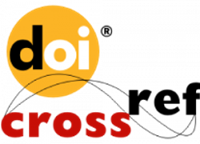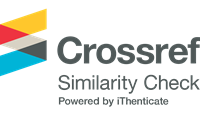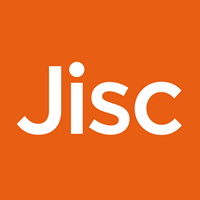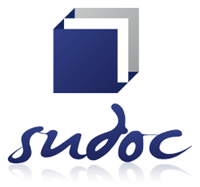Data visualisation in software supporting qualitative analysis
Abstract
This text results from research developed in the Postgraduate Program in Education at the Tiradentes University (Unit), in partnership with the University of Aveiro, Portugal, in 2019 and 2020. The objective sought to describe how the Visualization of Data (VD) is represented in the analysis of qualitative data with the support of Qualitative Data Analysis Software (QDAS). To achieve this objective, we reached the inclusion/exclusion criteria. Seven software frequently used today, trying to understand the most frequent representations of HV in QDAS, their structuring, and how they can contribute to the phases of organisation and analysis in a scenario that can vary from small to large amounts of data. The results show that the QDAS can help the researcher visualise the qualitative data analysed with transparency through data visualisation representations that stood out in tables, charts, maps, and representations with movements. During the analysis, it was also observed that each software offers representations in different ways. The type of user/researcher interaction with the generated representations has been an exclusive phenomenon of digital technologies, which visually improves how scientific production knowledge can better circulate knowledge production.
Downloads
References
Andrade, L. R. S. A., Linhares, R. N., Costa, A. P., & Almeida, C. A. (2019). The use of qualitative data analysis software in brazilian educational papers. International Conference in Engineering Applications (ICEA), 1-7. DOI: https://doi.org/10.1109/CEAP.2019.8883493
Bauman, Z. (2001). Modernidade líquida (Plínio Dentzien, Trad). Rio de Janeiro, RJ: Jorge Zahar.
Cairo, A. (2008). Infografia 2.0: visualización interactiva de información en prensa. Madrid, ES: Alamut.
Card, S. K., Mackinlay, J. D., Shneiderman, B., & Card, M. (1999). Readings in information visualization: using vision to think. San Francisco, CA: Morgan Kaufmann Publishers Inc.
Costa, A., & Reis, L. (2017). Vantagens e desvantagens do uso de software na análise de dados qualitativos. RISTI, (23), ix-xii. DOI: https://doi.org/ 10.17013/risti.23.0.
Freitas, C. M. D. S., Chubachi, O. M., Luzzardi, P. R. G., & Cava, R. A. (2001). Introdução à visualização de informações. Revista de Informatica Teórica e Aplicada, 8(2), 143-158. DOI: https://doi.org/10.5216/vis.v9i2.19844
Giddens, A. (1991). As consequências da modernidade (Raul Fiker, Trad.). São Paulo, SP: Unesp.
Lage, M. C. (2011). Os softwares tipo CAQDAS e a sua contribuição para a pesquisa qualitativa em educação. Educação Temática Digital, 12(2), 42-58. DOI: https://doi.org/ 10.20396/etd.v12i2.1187
Lage, M. C., & Godoy, A. S. (2008). O uso do computador na análise de dados qualitativos: questões emergentes. Revista de Administração Mackenzie, 9(4) 75-98. DOI: https://doi.org/10.1590/S1678-69712008000400006
Lemos, A. (2011). Ciborgues, Cartografias e Cidades: algumas reflexões sobre teoria Ator-Rede e Cibercultura. Revista de Linguagens, 42, 75-87.
Lemos, A., & Lévy, P. (2010). O futuro da internet: em direção a uma ciberdemocracia planetária. São Paulo, SP: Paulus.
Lévy, P. (1999). Cibercultura. Rio de Janeiro, RJ: Ed. 34.
Lipovetsky, G. (2004). Os tempos hipermodernos (Mário Vilela, Trad.). São Paulo, SP: Editora Barcarolla.
Lipovetsky, G. (2016). Da leveza para uma civilização do ligeiro. Lisboa, PT: Edições 70
Nascimento, H., & Ferreira, C. (2011). Uma introdução à visualização de informações. Visualidades, 9(2) 13-43. DOI: https://doi.org/ 10.5216/vis.v9i2.19844
Pereira, F. P. A. (2015). Big Data e Data Analysis: visualização de informação (Dissertação de Mestrado). Universidade do Minho, Escola de Engenharia, Portugal.
Santaella, L. (2003). Da cultura das mídias à cibercultura: O advento dos pós-humano. Revista FAMECOS, 23-32. DOI: https://doi.org/10.15448/1980-3729.2003.22.3229

This work is licensed under a Creative Commons Attribution 4.0 International License.
DECLARATION OF ORIGINALITY AND COPYRIGHTS
I declare that this article is original and has not been submitted for publication in any other national or international journal, either in part or in its entirety.
The copyright belongs exclusively to the authors. The licensing rights used by the journal are the Creative Commons Attribution 4.0 (CC BY 4.0) license: sharing (copying and distributing the material in any medium or format) and adaptation (remixing, transforming, and building upon the material thus licensed for any purpose, including commercial purposes) are permitted.
It is recommended that you read this link for more information on the subject: providing credits and references correctly, among other crucial details for the proper use of the licensed material.













































